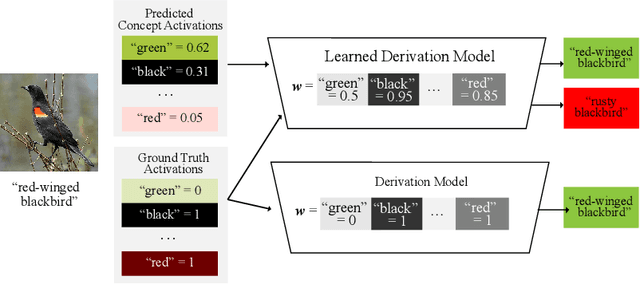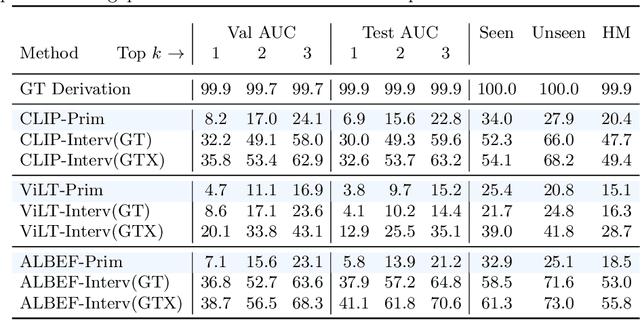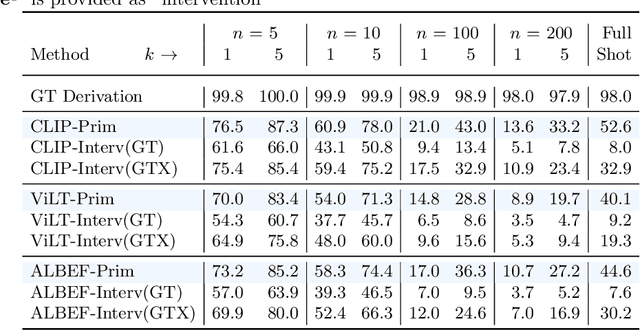Tian Yun
$100K or 100 Days: Trade-offs when Pre-Training with Academic Resources
Oct 30, 2024Abstract:Pre-training is notoriously compute-intensive and academic researchers are notoriously under-resourced. It is, therefore, commonly assumed that academics can't pre-train models. In this paper, we seek to clarify this assumption. We first survey academic researchers to learn about their available compute and then empirically measure the time to replicate models on such resources. We introduce a benchmark to measure the time to pre-train models on given GPUs and also identify ideal settings for maximizing training speed. We run our benchmark on a range of models and academic GPUs, spending 2,000 GPU-hours on our experiments. Our results reveal a brighter picture for academic pre-training: for example, although Pythia-1B was originally trained on 64 GPUs for 3 days, we find it is also possible to replicate this model (with the same hyper-parameters) in 3x fewer GPU-days: i.e. on 4 GPUs in 18 days. We conclude with a cost-benefit analysis to help clarify the trade-offs between price and pre-training time. We believe our benchmark will help academic researchers conduct experiments that require training larger models on more data. We fully release our codebase at: https://github.com/apoorvkh/academic-pretraining.
Pre-trained Vision-Language Models Learn Discoverable Visual Concepts
Apr 19, 2024Abstract:Do vision-language models (VLMs) pre-trained to caption an image of a "durian" learn visual concepts such as "brown" (color) and "spiky" (texture) at the same time? We aim to answer this question as visual concepts learned "for free" would enable wide applications such as neuro-symbolic reasoning or human-interpretable object classification. We assume that the visual concepts, if captured by pre-trained VLMs, can be extracted by their vision-language interface with text-based concept prompts. We observe that recent works prompting VLMs with concepts often differ in their strategies to define and evaluate the visual concepts, leading to conflicting conclusions. We propose a new concept definition strategy based on two observations: First, certain concept prompts include shortcuts that recognize correct concepts for wrong reasons; Second, multimodal information (e.g. visual discriminativeness, and textual knowledge) should be leveraged when selecting the concepts. Our proposed concept discovery and learning (CDL) framework is thus designed to identify a diverse list of generic visual concepts (e.g. "spiky" as opposed to "spiky durian"), which are ranked and selected based on visual and language mutual information. We carefully design quantitative and human evaluations of the discovered concepts on six diverse visual recognition datasets, which confirm that pre-trained VLMs do learn visual concepts that provide accurate and thorough descriptions for the recognized objects. All code and models are publicly released.
mOthello: When Do Cross-Lingual Representation Alignment and Cross-Lingual Transfer Emerge in Multilingual Models?
Apr 18, 2024



Abstract:Many pretrained multilingual models exhibit cross-lingual transfer ability, which is often attributed to a learned language-neutral representation during pretraining. However, it remains unclear what factors contribute to the learning of a language-neutral representation, and whether the learned language-neutral representation suffices to facilitate cross-lingual transfer. We propose a synthetic task, Multilingual Othello (mOthello), as a testbed to delve into these two questions. We find that: (1) models trained with naive multilingual pretraining fail to learn a language-neutral representation across all input languages; (2) the introduction of "anchor tokens" (i.e., lexical items that are identical across languages) helps cross-lingual representation alignment; and (3) the learning of a language-neutral representation alone is not sufficient to facilitate cross-lingual transfer. Based on our findings, we propose a novel approach - multilingual pretraining with unified output space - that both induces the learning of language-neutral representation and facilitates cross-lingual transfer.
Emergence of Abstract State Representations in Embodied Sequence Modeling
Nov 07, 2023Abstract:Decision making via sequence modeling aims to mimic the success of language models, where actions taken by an embodied agent are modeled as tokens to predict. Despite their promising performance, it remains unclear if embodied sequence modeling leads to the emergence of internal representations that represent the environmental state information. A model that lacks abstract state representations would be liable to make decisions based on surface statistics which fail to generalize. We take the BabyAI environment, a grid world in which language-conditioned navigation tasks are performed, and build a sequence modeling Transformer, which takes a language instruction, a sequence of actions, and environmental observations as its inputs. In order to investigate the emergence of abstract state representations, we design a "blindfolded" navigation task, where only the initial environmental layout, the language instruction, and the action sequence to complete the task are available for training. Our probing results show that intermediate environmental layouts can be reasonably reconstructed from the internal activations of a trained model, and that language instructions play a role in the reconstruction accuracy. Our results suggest that many key features of state representations can emerge via embodied sequence modeling, supporting an optimistic outlook for applications of sequence modeling objectives to more complex embodied decision-making domains.
Improved Inference of Human Intent by Combining Plan Recognition and Language Feedback
Oct 03, 2023



Abstract:Conversational assistive robots can aid people, especially those with cognitive impairments, to accomplish various tasks such as cooking meals, performing exercises, or operating machines. However, to interact with people effectively, robots must recognize human plans and goals from noisy observations of human actions, even when the user acts sub-optimally. Previous works on Plan and Goal Recognition (PGR) as planning have used hierarchical task networks (HTN) to model the actor/human. However, these techniques are insufficient as they do not have user engagement via natural modes of interaction such as language. Moreover, they have no mechanisms to let users, especially those with cognitive impairments, know of a deviation from their original plan or about any sub-optimal actions taken towards their goal. We propose a novel framework for plan and goal recognition in partially observable domains -- Dialogue for Goal Recognition (D4GR) enabling a robot to rectify its belief in human progress by asking clarification questions about noisy sensor data and sub-optimal human actions. We evaluate the performance of D4GR over two simulated domains -- kitchen and blocks domain. With language feedback and the world state information in a hierarchical task model, we show that D4GR framework for the highest sensor noise performs 1% better than HTN in goal accuracy in both domains. For plan accuracy, D4GR outperforms by 4% in the kitchen domain and 2% in the blocks domain in comparison to HTN. The ALWAYS-ASK oracle outperforms our policy by 3% in goal recognition and 7%in plan recognition. D4GR does so by asking 68% fewer questions than an oracle baseline. We also demonstrate a real-world robot scenario in the kitchen domain, validating the improved plan and goal recognition of D4GR in a realistic setting.
BLOOM: A 176B-Parameter Open-Access Multilingual Language Model
Nov 09, 2022Abstract:Large language models (LLMs) have been shown to be able to perform new tasks based on a few demonstrations or natural language instructions. While these capabilities have led to widespread adoption, most LLMs are developed by resource-rich organizations and are frequently kept from the public. As a step towards democratizing this powerful technology, we present BLOOM, a 176B-parameter open-access language model designed and built thanks to a collaboration of hundreds of researchers. BLOOM is a decoder-only Transformer language model that was trained on the ROOTS corpus, a dataset comprising hundreds of sources in 46 natural and 13 programming languages (59 in total). We find that BLOOM achieves competitive performance on a wide variety of benchmarks, with stronger results after undergoing multitask prompted finetuning. To facilitate future research and applications using LLMs, we publicly release our models and code under the Responsible AI License.
Do Vision-Language Pretrained Models Learn Primitive Concepts?
Mar 31, 2022



Abstract:Vision-language pretrained models have achieved impressive performance on multimodal reasoning and zero-shot recognition tasks. Many of these VL models are pretrained on unlabeled image and caption pairs from the internet. In this paper, we study whether the notion of primitive concepts, such as color and shape attributes, emerges automatically from these pretrained VL models. We propose to learn compositional derivations that map primitive concept activations into composite concepts, a task which we demonstrate to be straightforward given true primitive concept annotations. This compositional derivation learning (CompDL) framework allows us to quantitively measure the usefulness and interpretability of the learned derivations, by jointly considering the entire set of candidate primitive concepts. Our study reveals that state-of-the-art VL pretrained models learn primitive concepts that are highly useful as visual descriptors, as demonstrated by their strong performance on fine-grained visual recognition tasks, but those concepts struggle to provide interpretable compositional derivations, which highlights limitations of existing VL models. Code and models will be released.
Does Vision-and-Language Pretraining Improve Lexical Grounding?
Sep 21, 2021



Abstract:Linguistic representations derived from text alone have been criticized for their lack of grounding, i.e., connecting words to their meanings in the physical world. Vision-and-Language (VL) models, trained jointly on text and image or video data, have been offered as a response to such criticisms. However, while VL pretraining has shown success on multimodal tasks such as visual question answering, it is not yet known how the internal linguistic representations themselves compare to their text-only counterparts. This paper compares the semantic representations learned via VL vs. text-only pretraining for two recent VL models using a suite of analyses (clustering, probing, and performance on a commonsense question answering task) in a language-only setting. We find that the multimodal models fail to significantly outperform the text-only variants, suggesting that future work is required if multimodal pretraining is to be pursued as a means of improving NLP in general.
 Add to Chrome
Add to Chrome Add to Firefox
Add to Firefox Add to Edge
Add to Edge